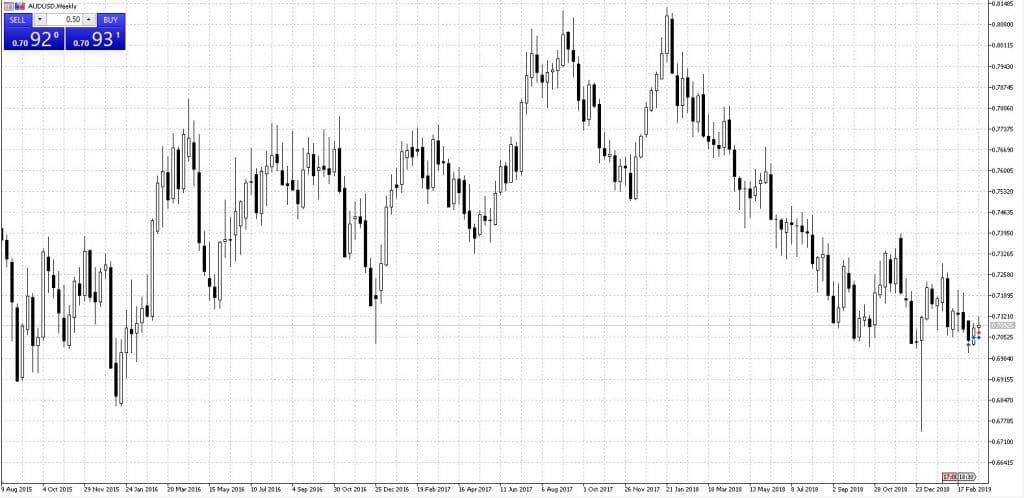- Trading
- Trading
- Markets
- Markets
- Products overview
- Forex
- Commodities
- Metals
- Indices
- Shares
- Cryptocurrencies
- Treasuries
- ETFs
- Accounts
- Accounts
- Compare our accounts
- Our spreads
- Funding & withdrawals
- Dynamic margin
- Volume rebates
- Open account
- Try free demo
- Platforms & tools
- Platforms & tools
- Platforms
- Platforms
- Platforms overview
- TradingView
- MetaTrader 4
- MetaTrader 5
- MetaTrader Copy Trading
- cTrader
- cTrader copy trading
- Mobile trading platforms
- GO WebTrader
- PAMM
- Premium trading tools
- Premium trading tools
- Tools overview
- VPS
- Genesis
- Signal Centre
- Education
- Education
- Resources
- Resources
- News & analysis
- Education hub
- Economic calendar
- Earnings announcements
- Help & support
- Help & support
- About
- About
- About GO Markets
- Our awards
- Sponsorships
- Client support
- Client support
- Contact us
- FAQs
- Quick support
- Holiday trading hours
- Maintenance schedule
- Fraud and scam awareness
- Legal documents
- Trading
- Trading
- Markets
- Markets
- Products overview
- Forex
- Commodities
- Metals
- Indices
- Shares
- Cryptocurrencies
- Treasuries
- ETFs
- Accounts
- Accounts
- Compare our accounts
- Our spreads
- Funding & withdrawals
- Dynamic margin
- Volume rebates
- Open account
- Try free demo
- Platforms & tools
- Platforms & tools
- Platforms
- Platforms
- Platforms overview
- TradingView
- MetaTrader 4
- MetaTrader 5
- MetaTrader Copy Trading
- cTrader
- cTrader copy trading
- Mobile trading platforms
- GO WebTrader
- PAMM
- Premium trading tools
- Premium trading tools
- Tools overview
- VPS
- Genesis
- Signal Centre
- Education
- Education
- Resources
- Resources
- News & analysis
- Education hub
- Economic calendar
- Earnings announcements
- Help & support
- Help & support
- About
- About
- About GO Markets
- Our awards
- Sponsorships
- Client support
- Client support
- Contact us
- FAQs
- Quick support
- Holiday trading hours
- Maintenance schedule
- Fraud and scam awareness
- Legal documents
- Home
- News & Analysis
- Forex
- Option traders – Time to Hedge your Currency Risk?
- Allow your invested trading capital to be subjected to the risks associated with underlying currency movements or,
- Hedge the currency risks with a non-expiring, low cost Forex position.
- Remove this risk completely through opening a very small leveraged forex trade (so akin to an insurance policy or a non-expiring put option)
- Attempt to optimise your hedge by timing its placement and exit i.e. use technical landmarks, to decide when to get in and out of a hedge.
- Explore the advantages of hedging against currency risk and potential risks of not doing so.
- Offer a step by step guide of to how to work out the amount and process of placing a currency “hedge”.
- Demonstrate how to action this, and where to get any support you need to make it happen.
- Discuss advanced approaches to utilising this in your trading including “timing your hedge”.
News & AnalysisM
 any traders utilise options amongst their investment strategies either for income or capital growth.
any traders utilise options amongst their investment strategies either for income or capital growth.As with Forex and CFD trading, options offer an opportunity to get into a leveraged position giving exposure to the movement of an underlying instrument.
One of the key factors that options traders may consider in their choice of specific markets to trade is liquidity, with a higher trading volume impacting positively on the ability to get in and out of trades at a fair price.For the options trader therefore, the breadth of choice and liquidity of US based options, make this market the preferred market to trade.
Like any type of trading, sustainable results require a depth of knowledge and commitment to trading an individual tried and tested system. This system should include in depth reference to risk management throughout.
However, due to the market of choice, a trader can make regular profit and yet lose this (and potentially more) through the currency risks associated with trading in US dollars rather than, for example, their base currency of Australian dollars or GB pounds.
Although directional options traders usually choose to invest relatively small amounts with perhaps a few thousands, if trading US covered calls when options are sold over a portfolio of bought shares the investment can be substantial, often into a tens of thousands investment.
So what is the risk?
The reality is that profits can be ‘used up’, or losses can be compounded, by adverse currency movements.
The reason for this is simple. Let’s assume that your currency is AUD and it is transferred into USD for trading purposes. The exchange value when converted back to the original currency at some time in the future will be dependent not only on trading results but on the movement of AUD versus USD.While your money is in your account in USD, weakness in AUD will mean a greater worth in AUD when converted back, whereas a lesser conversion worth will result if there is AUD strength while your money is sitting is USD.
Let’s give an example
See below a weekly chart of AUD/USD.

Note the price from the end of January 2018 at a level of 0.8134.
The price at March 20th 2019 was at 0.7100.So, an investment to fund a trading account of AUD$10,000 would have equalled an original USD value of $8134.
With the movement over this period the value of the account when transferred back into AUD would have risen to $11468.98 or in other words a 14.67% increase. So, in this case the underlying currency movements was of benefit.
However, if this is the case when there is USD strength (when your money is in USD), with the same AUDUSD currency movement in the other direction, the loss could be 14.67%. This would mean that you would have had to profit by this 14.67% in your trades simply to breakeven (looking at the same chart this is the movement from the beginning of Jan 2016 to Aug 2017).
More than this of course, if you have lost $1468 on a similar price move in the other direction, broke even on your trades during that period so your equivalent AUD value is $8532 your trading return would have to be now 17% profit to recover the original capital.
Just to reinforce a previous point, bear in mind of course we have chosen only a $10,000 example, some of you who are trading strategies such as ‘Covered Calls’ may have considerably more than this in the market (and so considerably more currency risk) than the example we have given.
So what can you do?
So, your choices are twofold.
If option “b” looks attractive, the reality is you can:
Learn how to reduce the risk
We are happy not only to show you how but guide you step by step in how to set this up. There are a couple of practical issues you would need to have in place to manage this well but again we can go through these to enable you to make the right decision for you.
We have a webinar session planned that aims to offer you the information you need to look at removing currency risk in your options trading which you would be very welcome to attend.To access this free training session on 3rd June go to https://attendee.gotowebinar.com/register/6726730073741725196
This session will give you learning relating to:
Either way, we trust that this article has been of interest and welcome any comments.
Ready to start trading?
Disclaimer: Articles are from GO Markets analysts and contributors and are based on their independent analysis or personal experiences. Views, opinions or trading styles expressed are their own, and should not be taken as either representative of or shared by GO Markets. Advice, if any, is of a ‘general’ nature and not based on your personal objectives, financial situation or needs. Consider how appropriate the advice, if any, is to your objectives, financial situation and needs, before acting on the advice. If the advice relates to acquiring a particular financial product, you should obtain and consider the Product Disclosure Statement (PDS) and Financial Services Guide (FSG) for that product before making any decisions.
Next Article
Preview: The Bank of Canada Rate Decision
One of the must-watch economic events this week will be the Bank of Canada interest rate decision. The decision is scheduled to be announced on Wednesday 29th May at 15:00 PM London time. Why Is The Announcement Important? A bank interest rate is a rate at which a countries central bank lends money to local banks. The interest rate is charged by ...
May 28, 2019Read More >Previous Article
“Will China Dump US Treasuries?”
“Will China Dump US Treasuries?” A tweet from Hu Xijin, editor-in-chief of the Global Times grasped attention on Tuesday morning, and even B...
May 15, 2019Read More >News and Analysis
Join our mailing list to receive market news and monthly newsletters, delivered directly to our inbox.

